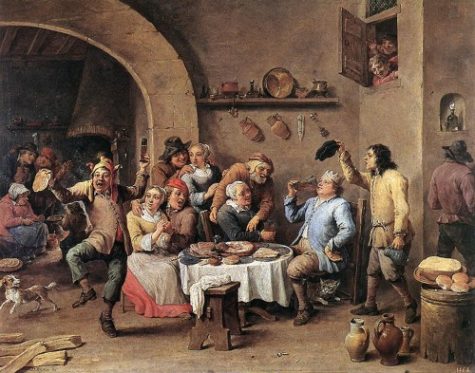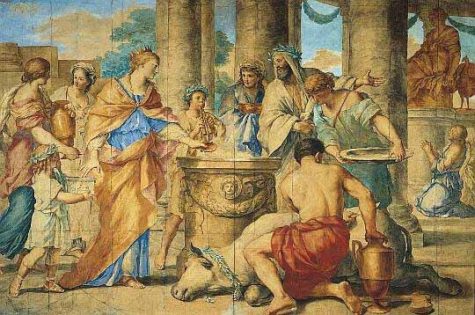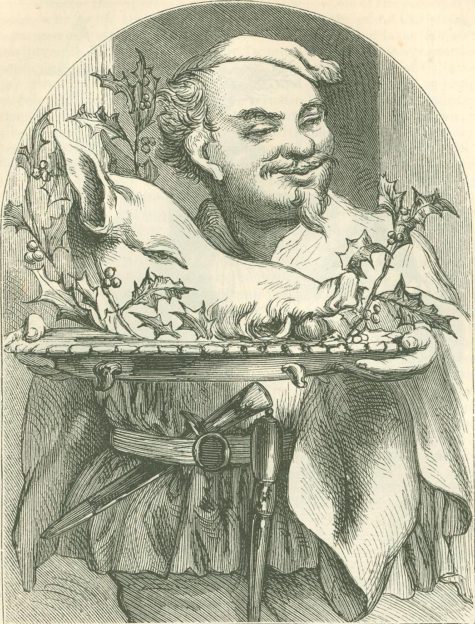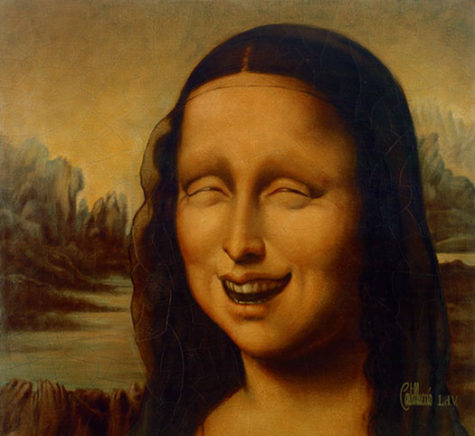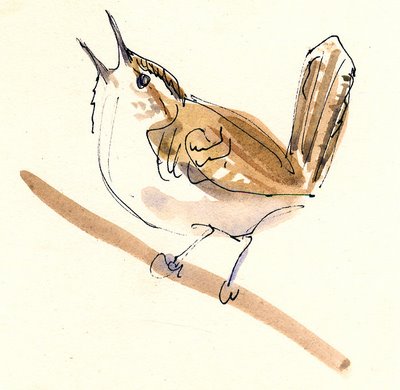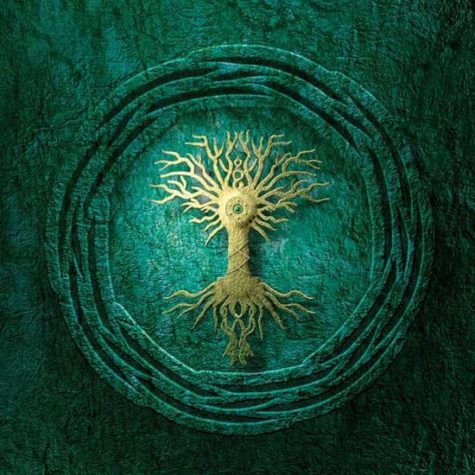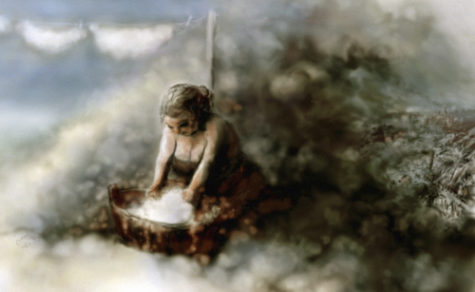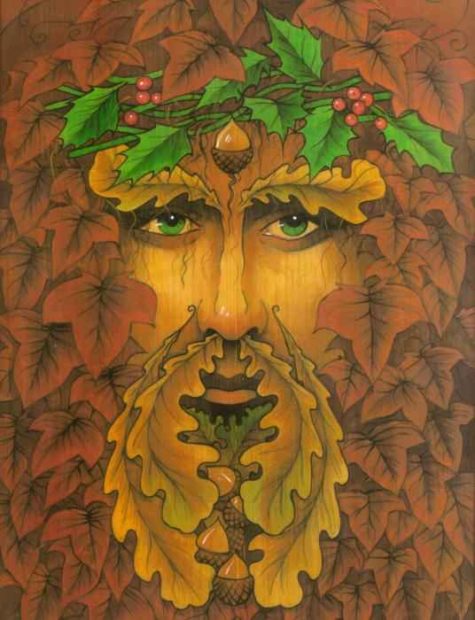Midwinter Festivals
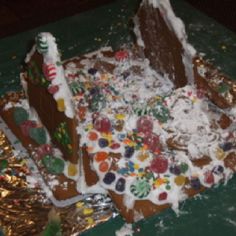 In Sweden, January 13, St Knut’s Day, is the traditional day to discard the Christmas tree and end the season’s festivities. A children’s party is the favored way to strip the tree of its decorations, after which the children are free to “plunder” the edible treats and small gifts placed on the tree especially for the occasion.
In Sweden, January 13, St Knut’s Day, is the traditional day to discard the Christmas tree and end the season’s festivities. A children’s party is the favored way to strip the tree of its decorations, after which the children are free to “plunder” the edible treats and small gifts placed on the tree especially for the occasion.
This Christmas tree plundering is often accompanied by smashing up the gingerbread houses and eating them while discarding of the decorations. Finally, everyone “dances” the tree out the door. Singing special songs, they pick up the tree and toss it out into the snow.
However in Finland, the tradition is quite different:
Called Nuutinpäivä, there has been a tradition somewhat analogous to modern Santa Claus, where young men dressed as a goat (Finnish: Nuuttipukki) would visit houses. Usually the dress was an inverted fur jacket, a leather or birch bark mask, and horns. Unlike Santa Claus, Nuuttipukki was a scary character.
The men dressed as Nuuttipukki wandered from house to house, came in, and typically demanded food from the household and especially leftover alcoholic beverages. In Finland the Nuuttipukki tradition is still living at areas of Satakunta, Southwest Finland and Ostrobothnia. However, nowadays the character is usually played by children and now involves a happy encounter.
A proverb from Noormarkku says:
Hyvä Tuomas joulun tua,
paha Knuuti poijes viä
“Good Thomas brings Christmas,
evil Knut takes it away.”
Courtesy of: almanac.com and Wikipedia
In Old England, The Twelfth Night marked the end of the winter festival that started on Samhain. The Lord of Misrule symbolizes the world turning upside down with the coming of winter. In the middle ages, the Twelfth Night began on the eve of December 25th moving forward 12 days to January 6th, hence the name the twelve days of Christmas.
The Twelfth Night festival marked the onset of the winter solstice, the point in late December when the sun, whose daily arc had reached its lowest, darkest, coldest point, began its rise toward the longer, warmer days and the coming of spring. On December 25th, the ceremonial Yule log was hauled in to start the hearth fire around which its members and visitors would gather throughout the rest of the Christmas festival days.
Twelfth Night was the final frenzy of feasting, drinking and merry making before the townspeople returned to daily life for the remainder of winter. A grand cake was the focus of the celebratory feast as well as Wassail, Fig Pudding and other generous tasty handmade dishes.
In the ancient times of the Roman Saturnalia, the “king of the feast” was elected by beans, and the Twelfth Night cakes included a bean–or, later, a ring or coin. Whoever was given the slice with the prize became the queen and king for the night and much parading and merriment followed.
In the church calendar, Twelfth Night is the evening before Epiphany (January 6). Because the three wise men (or kings) arrived in Bethlehem bearing gifts for the infant Jesus, Epiphany is also called Three Kings Day and a traditional time of gift giving.
Sources: White Magick Alchemy and Almanac.com
The Kalends of January (Jan 2nd, the 9th day of Christmas) was a significant part of the Roman Midwinter celebrations, and has lent its name to Midwinter festivals all over the Western world. For example, in Provence in France the festival is known as Calendas, in Poland it is called Kolenda, and in Russia, Kolyada. In the Czech Republic it is called Koteda, in Lithuania, Kalledos, and in Wales and Scotland, Calenig and Calluinn respectively – all these names derived from the Latin Kalendae, and all referring to the festival of midwinter.
Initially the Kalends followed Saturnalia, beginning a few days of rest to allow aching heads and stomachs to recover! At this time new consuls were inducted into office, and for at least three days a high festival took place.
Houses were decorated with lights and greenery and gifts were exchanged. It was also the custom to give special presents to the emperor. These, called Votae, were left in the porch of the imperial palace, and it is recorded that the Emperor Calligula not only demanded these gifts from everyone, but also stood in the porch to collect them personally!
It may have been the memory of this that prompted the 4th century writer Libanius to describe the festival in terms that might be easily applied to the modern celebration of Christmas as to the celebrations in ancient Rome:
The impulse to spend seizes everyone..
People are not only generous themselves,
but also towards their fellow men.
A stream of presents pours itself out on all sides.
The Kalends festival banishes all that is
connected with toil, and allows men to give
themselves up to undisturbed enjoyment.
From the minds of young people it
removes two kinds of dread:
the dread of the schoolmaster and
the dread of the pedagogue.
The slave also it allows, as far as possible,
to breathe the air of freedom…
Another great quality of the festival
is that it teaches men not to hold too fast
to their money, but to part with it
and let it pass into other hands.
Source: The Winter Solstice
The sixth day of Christmas (Dec 30) is the day of “Bringing in the Boar.” Two traditions honor the importance of the boar at Solstice tide. In Scandinavia, Frey, the god of sunshine, rode across the sky on his golden-bristled boar. Gulli-burstin, who was seen as a solar image, his spikes representing the rays of the sun.
In the ancient Norse tradition, the intention was to gain favor from Frey in the new year. The boar’s head with an apple in his mouth was carried into the banquet hall on a gold or silver dish to the sounds of trumpets and the songs of minstrels.
In Scandinavia and England Saint Stephen (whose feast day is Dec 26) is shown as tending to horses and bringing a boar’s head to a Yuletide banquet. Christmas ham is an old tradition in Sweden and may have originated as a winter solstice boar sacrifice to Freyr.
Here’s a song from 1607:
The Boar is dead,
Lo, here is his head,
What man could have done more
Than his head off to strike,
Meleager like.
And bring it as I do before.
His living spoiled,
Where good men toiled,
Which makes kind Ceres sorry;
But now, dead and drawn,
he is very good brawn,
And we have brought it for ye.
Then set down the swineherd,
The foe of the vineyard,
Let Baccus crown his fall;
Let this boar’s head and mustard,
Stand for pig,goose and custard,
And so ye are welcome all.
From: The Winter Solstice and other sources.
The Feast of Fools, the fifth day of Christmas, (Dec 29), is a day when the normal order of things was ceremonially reversed, has been neglected for a long while – unfortunately, as it could well serve in our own times as a safe way of letting off steam. Essentially, it allowed people who were restricted from even the most casual of pleasure by the Church, to act in an abandoned way. It was also a time of festivity that was both part of, and sometimes even superseded, Christmas.
So, why not celebrate the Feast of Fools by having your own party where things get reversed, where your guests are invited to act as foolish as they can? Here are some ideas:
- Invite your guests to wear silly clothes
- Provide a box of silly or outrageous accessories – hats, shoes, wigs, gloves… use your imagination
- Have everyone paint their faces, or fingernails in wild colors (men as well as women)
- Organize a food fight or a pie throwing contest.
- Provide helium balloons so every one can talk funny.
For a great party game ask your guests to each write down a forfeit – an action that involves something very silly such as shaving with real cream, singing the words of one song to the tune of another, juggling with oranges – whatever they like. Then each guest should pull out a forfeit from the hat and do their best to obey the instruction.
If you are alone, you can still act the fool. Here are some suggestions:
- Make goofy faces at yourself in the mirror
- Wear your own clothes inside out and backwards
- Make a video or other recording of yourself laughing hysterically (fake it until you make it).
Above all, let this be a day of joyful fun and blissful games…
From: The Winter Solstice
The wren, the wren, The king of all birds,
On St. Stephen’s Day Is caught in the furze.
One of the most remarkable and dramatic Solstice customs involving animals is the Hunting of the Wren, which traditionally takes place on Boxing Day or St. Stephen’s Day. The custom lasted longest in Wales and the Isle of Man and still takes place today in Ireland. A description from 1840 describes it thus:
For some weeks preceding Christmas, crowds of village boys may be seen peering into hedges, in search of the tiny wren; and when one is discovered the whole assemble and give wager chase until they have slain the little bird. In the hunt the utmost excitement prevail; shouting, screeching, and rushing, all sorts of missiles are flung at the puny mark… From bush to bush, from hedge to hedge, is the wren pursued until bagged with as much pride and pleasure as the cock of the woods by the more ambitious sportsman… On the anniversary of St. Stephen the enigma is explained. Attached to a huge holly bush, elevated on a pole, the bodies of several little wrens are borne about… through the streets in procession… And every now and then stopping before some popular house and there singing the Wren song.
Various versions of this song have survived. Here is a typical one:
The wren, the wren, the king of all birds,
On St. Stephen’s Day was caught in the furze;
Though his body is small, his family is great,
So if it please your honor, give us a treat.
On Christmas day I turned a spit;
I burned my finger, I feel it yet.
Up with the kettle, down with the pan.
Give us some money to bury the wren.
The antiquity of this rather barbaric custom is clear enough. At one time the Wren, the “king of all birds,” must have represented the dying year king and was sacrificed on his behalf for the good of the land. The following story from Scotland suggest the reason for this rather plain little bird being addressed as King.
The Parliament of Birds:
At a gathering of birds, it was decided to elect a king by seeing which could fly the highest, and nearest to the sun. The eagle’s broad strong wings bore it higher than any other. It was about to acclaim its prowess, when it became aware of a “whirr-chuck” sound – the little wren had flown yet higher than the eagle, because it was cheekily perched on it’s back.
For many years during the 18th and 19th centuries, the Irish Wren Boys were accompanied by masked guisers, including the ubiquitous lair bhan or White Mare. Nowadays, due in part to a shortage of wrens and to a somewhat more bird-conscious awareness, they are seldom hunted. Although the Wren Boys still circulate in Ireland, they no longer kill a wren, but proceed from house to house with a decorated cage.
Here is a different wren song sung by the guisers in Pembrokeshire, England, where the custom is no longer practiced, but the sacredness of the bird is remembered:
Joy, health, love and peace be all here in this place.
By your leave we will sing concerning our king.
Our king is well dressed, in silks of the best,
In ribbons so rare, no king can compare.
We have traveled many miles, over hedges and stiles,
In search of our king, until you we bring.
Old Christmas is past, Twelfth Night is the last,
And we bid you adieu, great joy to the new.
It is not of the newborn king of Winter, the Wondrous Child they are speaking, but King Wren, who is remembered in a curious song from Oxfordshire, that manages to encapsulate the more ancient significance of the custom.
From: The Winter Solstice
Art by: Cathy Johnson
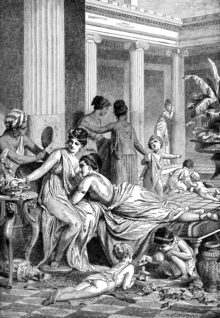 In Athens and other parts of ancient Greece, there is a month that corresponds to roughly December/January that is named Poseideon for the sea-god Poseidon. The Poseidonia of Aegina may have taken place in the same month. Presumably on or around the Winter Solstice.
In Athens and other parts of ancient Greece, there is a month that corresponds to roughly December/January that is named Poseideon for the sea-god Poseidon. The Poseidonia of Aegina may have taken place in the same month. Presumably on or around the Winter Solstice.
There were 16 days of feasting with rites of Aphrodite concluding the festival. Like the Roman festival of Saturnalia, the Poseidonia became so popular it was extended so that Athenaeus makes it 2 months long.
Poseidon as savior of ships, protector of those who voyage in ships, and God of the lapping waters both salt and fresh important for agriculture, is thanked for the many gifts that came from faraway places that were likely given at that time. The immense trade and distribution was nearly all through shipping, relatively little overland, whether it be perfume from Cyprus or pottery from Corinth.
It is interesting today that Agios Nikolaos (Saint Nikolas) is the Patron Saint of seafarers in the Orthodox Church. Celebrating Poseidon’s Festival seems to be lost in modern practice. It likely entailed bonfires, feasting, cutting of trees (probably decorated), and very likely gift giving. As God of begetting, that aspect was not forgotten.
The most complete account of the festival is Noel Robertson’s article Poseidon’s Festival at the Winter Solstice, The Classical Quarterly, New Series, Vol. 34, No. 1. (1984), pp. 1-16:
“The record shows that Poseidon was once worshiped in every part of Greece as a god of general importance to the community.”
“The festival falls near the winter solstice, and the ritual business marked by jollity and license, belongs to the general type of solstice festival known the world over. At Poseidon’s festival, however, the sportive conduct has a definite purpose; this purpose arises from the fundamental agrarian background if Mediterranean society, and may bring us close to the origin of solstice festivals.”
“It has scarcely been noticed that festivals of Poseidon, more than those of any other Greek deity, fall at just this time of year; yet the evidence is extensive.”
“The festival Poseidea and some of the rites in question are often claimed for Poseidon the sea-god, but at this season sailing is furthest from one’s mind, and fishing on the shore is by no means an overriding concern. Such details as we have point elsewhere, to Poseidon as the god of fresh water who fructifies Demeter’s fields.”
One of Poseidon’s epithets is prosklystios, ‘of the lapping water’. He is also invoked as Poseidon phytalmios which implies natural fertility and human procreation. There are also implications in the legends that imply bonfires at the winter solstice.
Noel Robertson concludes:
“…the celebrants feast to satiety, then turn to lascivious teasing. What is the ritual purpose of such conduct? It obviously suits Poseidon’s mythical reputation as the most lustful of gods, who far surpasses Apollo and Zeus in the number of his liaisons and his offspring. Poseidon the seducer is the god of springs and rivers; his women typically succumb while bathing or drawing water; the type of the river god is a rampant bull. But the ritual likewise treats Poseidon as a procreant force; witness the epithets phytalmios, genesios, pater, etc. as interpreted above. The myths and the ritual reflect the same belief. The rushing waters are a proponent male power, just as the fields which they fertilize are a prolific female. Both water and the fields, both Poseidon and Demeter, can be made to operate by sympathetic magic. The rites of our winter festival rouse Poseidon and bring the rushing waters…”
It is interesting that that Theophrastus tells us that the silver fir was important in ship building, especially for masts. The ‘tannenbaum’ is a silver fir. It is also interesting to compare with the Roman Saturnalia which may very well have borrowed from the Poseidea.
The Death of Tammuz also known as Noosardel (sprinkling water on the path of God) was another Yultide holiday celebrated with an early morning worship service, a tree, and a burning log.
“Then he brought me to the door of the gate of the Lord’s house
which was toward the north; and, behold,
there sat women weeping for Tammuz.”
~Ezekiel 8:14
In the legend, Tammuz dies young and his birth is honored on his birthday which coincided with the Winter Solstice. This was celebrated on or around December 21st. Part of the ritual involved cutting down a young evergreen tree as a way of commemorating the premature death of Tammuz. Along with this, the Babylonians would also burn a Yala (Yule) log, called “the log of the son.” It was burned in the fire to symbolize the death of Tammuz. The next day the evergreen tree would be decorated with silver and gold. The log that was burned was now alive again as the Tammuz tree.
“..for one cutteth a tree out of the forest,
the work of the hands of the workman, with the ax;
They deck it with silver and with gold;
they fasten it with nails and with hammers,
that it move not.”
~Jeremiah 10:3-4
Found at: Assyrian Voice
Mother Night is traditionally celebrated on the third day of the twelve days of Christmas. I couldn’t find much lore, but I did find this nice little article in The Winter Solstice about Mother Christmas (Frau Holle, Holda, Hulda, Holla):
Honoring the Mothers
There are so many male figures associated with the Winter Solstice, we should give room to at least one female character, and who better than Mother Christmas? On this day, include a figure of Holda upon your Winter shrine.
Here is a modern invocation for Holda by Diana Paxson:
Holy Holla, in the heavens,
A snowy featherbed you’re shaking –
Bless the earth with your white blanket,
Moist the mantle you are making.
Holla high above come riding.
Your Wagon rolls through winter weather;
Turn away your face of terror,
Bless us as we bide together.
Holy Holla, here we gather,
Send us skill in all our spinning.
Huldrefold (Gnomes) to help in housework,
Wealth and health with your aid winning.
Yule occurs on the Winter Solstice. This is the time of year when the sun is at its lowest point in the sky (Northern Hemisphere) and the Sun enters the sign of Capricorn. This usually happens between December 20th and December 23rd. Also known as: Alban Arthuan, the Winter Solstice marks the longest night of the year.
The word Solstice means “standing-still-sun” because the sun seems to stand still for this one day before the daylight begins to grow again. The sun will only rise higher and higher in the sky from this point onward. It is from this point that the days begin slowly to become longer and longer. The sun is at its most southeastern point over the Tropic of Capricorn in the northern hemisphere and has no apparent northward or southward motion. Since it appears that the sun’s light is growing as each day passes after this one, this holiday is celebrated as the birth of the sun.
The word Yule comes from the Old Norse “iul,” meaning wheel ,and refers to the ‘wheel of the year’, (or the idea of the year, seen as a wheel turning as the seasons change).
To our ancestors, the Sun was often identified with God, and the earth and moon with the Goddess. Since it was at this time that the daylight began to grow, our ancestors believed that this was the day the Goddess gave birth to the ‘sun-Son’. In the time of the ancient tribes this was a time of celebration, for it meant the turning point of winter and the eventual return of spring. Yule is the time when we honor the Goddess for giving birth to the sun once more. It is the time when the Oak King is victorious over the Holly King.
The Holly King represents death and darkness that has ruled since Samhain, and the Oak King represents rebirth and life. The waning (diminishing) sun is overtaken by the waxing (increasing) sun, thus the days become longer after the victory of the Oak King.
Yule is a time when we do Rituals and celebrate the increasing daylight, to renew, and to see the world through the eyes of a child. Spells done at Yule tend to raise our spirits, and bring harmony, peace, and joy. During Yule we see the wisdom of past experience begin to glimmer. The experiences we yielded over the harvest season of the times gone past begin to be reborn as wisdom, new light, to guide us further down the Paths we have chosen.
Because His birth heralds the days growing longer, the God represents hope in the coming cold of Winter and the promise that spring lies ahead. Since we are still in the coldest part of the year, with much cold and darkness still ahead of us, we should emulate the newly born baby. The baby Son draws close to his mother (the Goddess) at this time… we too must draw inward and be thankful for the family we have to help us through the hardships. This is also a time to delve into the depth of your mind and really look at yourself and see what you have learned in the past year.
Yule Traditions and Symbols
It is customary for Witches to decorate the Yule tree, and adorn the house with holly, ivy and pine. It is time when Father Winter, a white bearded chap dress in red, fur trimmed robes, arrives bearing gifts and exchange gifts.
This is the eve when the Yule log from the previous year is burned in the fire. Symbolic of the newborn sun, each year’s Yule log is of oak, charged in a Magic Circle and kept in sacred space the following Yule. This not only celebrates the oak and places it in a place of distinguished honor, but also ensures there will be fuel for the remainder of Winter.
Kissing Under The Mistletoe – Kissing under the mistletoe was first associated with the Greek celebration of Saturnalia and because it was believed to have the power of bestowing fertility, it became associated with marriage rites. In some parts of England, the Christmas mistletoe is burned on the Twelfth Night because it was believed that if it were not burned, all those who had kissed beneath it would never marry. And did you know that originally the custom was that a man should pluck one berry from the mistletoe each time he kisses a woman under the mistletoe, and when the last berry is gone, there should be no more kissing! (Information from Sara Williams)
Leaving Cookies for Santa – The ancient Celtic peoples left offerings of seeds, oats and oatcakes for the “wee people” and for the Gods or Goddesses of the different tribes. This practice evolved into the modern practice of leaving milk and cookies for Santa Claus.
Decorating The Yule Tree – In ancient times, the tree was decorated with symbols of the gifts the people wanted to receive from the Gods… Acorns, Oak Leaves, and Suns were representations of the Sun God. Birds and Bird Nests represented fertility as well as the return of the migrating flocks of birds in the Spring. Candles (and later, lights) were used to welcome back the Sun God and to encourage the sun to return. Crescent Moons and Silver Balls represented the Mother Goddess in her many forms Flowers, even the Poinsettia, represented the hope of the coming or Spring. Frogs, particularly Tree Frogs were for calling Spring back, since the call of the tree frog is one of the earliest signs of Spring. Fruit represented a bountiful harvest as well as the coming season of renewal and birth. Harps represented the continuity handed down by traveling Bards. Horns, drums and other musical instruments symbolized the ‘Blowing in the Yule’ and also represented the joyous music that welcomes the Sun God. Nuts represented a bountiful harvest. Toads, especially when hung upside down, were considered strong protection for the family.
Bells – Ancient Pagans rang bells during the Winter Solstice festivities to drive away demons that surfaced during the dark time of the year.* Also, the ringing of bells was thought to chase away the darkness so in some cultures, bells were rung in the morning as everyone rose to chase away the darkened days bring and heralding the warmer days.
Candles – Fires have been lit since ancient times to ward off the chill of Winter, chase away demons, and lure back the returning Sun (or son). * Candles were a useful way to have an ‘eternal’ flame while in the home. Also, many more candles could be lit than fires meaning more encouragement for the returning Sun.
Candy Cane – There is no denying that the Candy Cane has Christian roots… After all, an ingenious candy maker took an already existing candy – a straight white peppermint candy and bent the end of it to resemble a shepherd’s crook – since Jesus was the shepherd of men… or the letter “J”, for Jesus. He then placed a wide red stripe was to represent the blood Jesus shed on the cross, the three small red stripes were to represent his scourging, and the white of the cane was to represent the purity of Jesus and/or the forgiveness of sins his suffering bought for mankind.
However, Pagans have their own symbolism for the candy cane… The colors represent the God and Goddess (either as Red for the heat of the Sun and white for the coolness of the moon OR as Red for the blood shed by the mother while giving birth to the Sun God and white for the brightness of the Sun). The colors also represent the balance of the God and Goddess (or nature) since neither color is more prominent than the other color is. The peppermint is cool on the tongue (symbolizing the chill of winter), but has a bite to it, which is symbolic of the heat of the reborn Sun.
Elves – Elves first became associated with Yule because the ancients knew that the Spirits that created the Sun inhabited the land of Elves. By including elves in the Yule celebrations, the ancients believed they were assuring the elves assistance in the coercion of the Sun to return. Of course, since Father Christmas was patterned very closely after Odin, who was the King of the Elves, it makes sense that elves would be associated with him (and Christmas) also.
Evergreens – Evergreens were thought to have power over death because their green never faded. The evergreens were considered to be so powerful that they could defeat winter demons and hold back death and destruction. Because of their power and tenacity, evergreens were also believed to encourage the Sun’s return and were therefore placed around the home, both inside and out.
Gingerbread – Gingerbread was considered to be a specialty bread since ginger hadn’t ever been available until the Crusaders brought it back in the 11th century. There were strict laws regarding specialty breads in that time, so gingerbread was only allowed to be produced during Easter and Christmas. Since there was no Easter marketplace, it wasn’t long before gingerbread became associated with winter and Christmas.
Holly – The evergreen of the Holly leaves represents the hope of winter survival in celebrations of the winter solstice throughout the Old World. It is also, of course, representative of the Holly King (Father Christmas). The British consider the thorny-leafed holly to be male and the smooth-leafed holly to be female. Because of this, whichever variety is first brought into the home during the holidays determines which gender will lead the household during the coming year.
Mistletoe – The word ‘Mistletoe’ translates from its Anglo-Saxon origin into ‘dung-on-a-twig’. It came by this name because the ancient peoples observed that mistletoe would often appear on a branch or twig where birds had left droppings. (It was later discovered – in the sixteenth century – that the mistletoe seeds had been eaten by the birds and then sprouted after passing through the digestive tract and being deposited in the droppings). The mistletoe of the sacred oak was especially sacred to the ancient Celtic Druids and would be harvested on the sixth night of the moon with a golden sickle. Since it was gathered at Winter Solstice and it was seen as the ‘soul’ of the oak (and as a sexual symbol), the cutting of the mistletoe came to symbolize the defeat of the Oak King by the Holly King. It was hung from ceilings and place over doorways to ward off evil spirits (and to prevent witches from entering). (Information from Sara Williams)
Reindeer – Many people believe that reindeer are symbolic of the stags that drew Freya’s chariot. Of course, there is always the theory that there are 8 reindeer to represent the eight-legged steed of Odin (or the 8 Sabbats). Either way, it is easy to extrapolate that reindeer are a symbol of Cernunnos and that having horned creatures as a symbol of the day the Sun God is reborn is only fitting.
Santa Claus – Today’s Santa is a folk figure with multicultural roots. He embodies characteristics of Saturn (Roman agricultural god), Cronos (Greek god, also known as Father Time), the Holly King (Celtic god of the dying year), Father Ice/Grandfather Frost (Russian winter god), Thor (Norse sky god who rides the sky in a chariot drawn by goats), Odin/Wotan (Scandinavian/Teutonic All-Father who rides the sky on an eight-legged horse), Frey (Norse fertility god), and the Tomte (a Norse Land Spirit known for giving gifts to children at this time of year). Santa’s reindeer can be viewed as forms of Herne, the Celtic Horned God. Decorate your home with Santa images that reflect His Pagan heritage. Information from Selena Fox.
Tinsel – The tradition of placing tinsel on the tree comes from an old legend. Apparently, spiders were not allowed near the Yule tree – not even close enough to get a peek of it. Needless to say, this upset them greatly, so they complained. In some versions of the story they complain to the Christ-child, in others, they complain to the Goddess… either way, they were allowed admittance to the tree. Overjoyed by their victory, the spiders climbed around the tree, wrapping it in glistening webs. The Christ-child (or Goddess, depending on the story) was so delighted by their creativity that the webs were transformed into strands of silver (i.e. tinsel).
Tree – The custom of having a tree as a central focal piece in winter holiday celebrations can be traced back hundreds of centuries. The ancient Egyptians had a custom of bringing branches from palm trees into their homes on the shortest day of the year each December. The Chinese and Hebrews from ancient history had similar traditions, too.
Wassail – Wassail comes from the Old English words waes hael, which means “be well,” “be hale,” or “good health.” A strong, hot drink (usually a mixture of ale, honey, and spices) would be put in a large bowl, and the host would lift it and greet his companions with “waes hael,” to which they would reply “drinc hael,” which meant “drink and be well.” However, the ritual of ‘wassailing’ consisted of saluting the fruit trees and then sprinkling them with a bit of the wassail drink (which consisted of wine, ale, or cider with apples and eggs blended in)
Wreaths – The wreath’s circle symbolizes the wheel of the year and the completion of another cycle. Wreaths are hung as decoration and given as gifts to symbolize the infinity of goodwill, friendship, and joyfulness.
Yule Log – The custom of burning the Yule log began with the ancient Scandinavians who burned a huge log in honor of their god Thor once a year. For the Vikings, the yule log was an integral part of their celebration of the solstice, the julfest; on the log they would carve runes representing unwanted traits (such as ill fortune or poor honor) that they wanted the gods to take from them. Even as the Christian religion filtered into Scandinavia, the custom of the Yule log remained. The log was thought to bring blessings if it lasted 24 hours. It was also thought that the longer the Yule log burned the faster the Sun would come to warm the earth. Individuals would keep an unburned part of the log to light the next year’s Yule log. This unburned portion was also thought to bring good luck as well as protect the home from lightning and fire during the year.
Spell craft of Yule:
Spell craft performed for Yule should be for peace, harmony, love, and increased happiness.
Activities for Yule:
Caroling, wassailing , burning the Yule log, decorating the Yule tree, exchanging of presents, kissing under the mistletoe, feeding of animals and/or birds with grains and seeds
The God of Yule:
Frey – God, brother-consort of Freyja; son of Njord. “The Lord”, fertility and creativity God; “the Lover”; God of Yule. He is the god of wealth and peace and contentment. Blood was not allowed to be spilled through violence, nor where weapons or outlaws allowed on or in his holy places.
Other Deities:
- Apollo, Brighid, Demeter, Diana, Divine Child, Gaea, Great Mother, Green Man, Isis, Lugh, Mabon, Oak King, Odin, Ra, The Horned One
Symbols:
- A simmering pot of wassail, Baskets of clove studded fruit, Christmas cactus, Evergreen boughs or wreaths, Gold pillar candles, Holly, Mistletoe hung in doorways, Poinsettias, Yule log, or small Yule log with 3 candles
Herbs of Yule:
- Mistletoe: Magical Uses – Use to combat despair, herb of protection, child theft by fairies, healing, hunting, conception, to bring beautiful dreams, unlock the secrets of immortality through dreams – used for wands and ritual items or placed around a ‘Hand of Glory’ to ward off thieves – to protect the bearer from werewolves.
- Holly: Symbolizing – Protection; Good Luck. Forms used include boughs over portals, wreaths
- More Herbs: Bayberry, blessed thistle, laurel, pine, sage, yellow cedar, Bayberry. Blessed thistle, Evergreen, Frankincense, Holly, Laurel, Mistletoe, Oak, Pine, Sage, Yellow cedar.
Foods of Yule:
- Cookies and caraway cakes soaked in cider, Eggnog, Fruits, Ginger tea, Nuts, Pork dishes, Spiced cider, Turkey, Wassail, or lamb’s wool (ale, sugar, nutmeg, roasted apples).
Incense of Yule:
- Bayberry, Cedar, Cinnamon, Pine,
Colors of Yule:
- Green, Red, White, Gold, Silver, Yellow, Orange
Stones of Yule:
- Diamonds, Rubies, Emeralds, Bloodstones, Garnets
Trees for Yule:
- Oak : Endurance, Strength, Triumph, Protection. Magical Uses – Abundance, fertility, longevity, protection, spiritual awareness while remaining fully rooted in the earth plane, it’s wood is used for staves and wands, use any parts for protective charms which bring healing. Acorns bring fertility and abundance. Plant in the dark of the moon to bring financial prosperity.
- Evergreens: Continuity of Life, Protection, Prosperity. Forms used include boughs, wreaths, garlands, trees.
- Yew : Last Day of Solar Year; Death
- Silver Fir: Winter Solstice Day; Birth.
- Birch: Month following Winter Solstice; Beginnings.
From: Mystic Moon Coven and other sources
